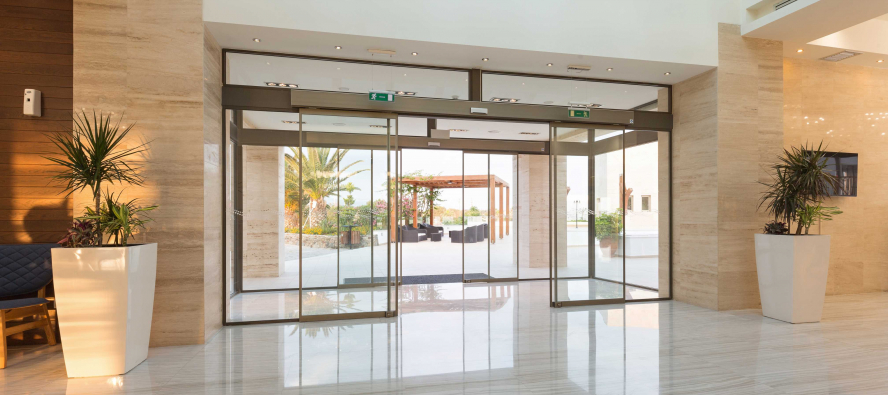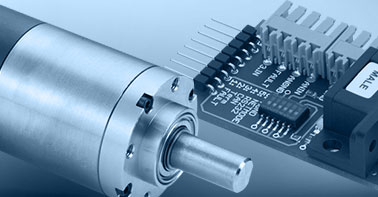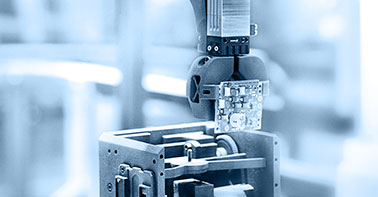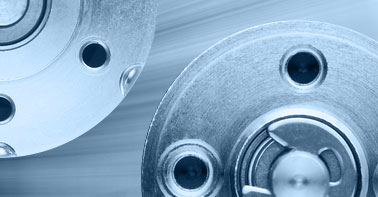- info@ems-ltd.com
- 0118 9817391
Home > PR > Automated access with DC motors
Automated access with DC motors
09/11/2023 - Exploring the benefits and considerations of automated access
9th November 2023
Filed under:
Ems, Buhler, Dc Motor, Building Automation

When renovating a space, most begin by improving what’s inside. But we might be overlooking something simple, and likely the very first thing you’ll encounter — the front door. Automating doors can offer a host of benefits, but choosing the right drive system can be tricky. Here, Dave Walsha, sales manager at DC motor supplier EMS explains all you need to know.
While manual doors still meet the needs of many smaller businesses and offices, larger organisations with more traffic might find that automating their doors can bring unexpected benefits.
Why opt for an automatic door?
The first, and perhaps surprising, reason why you should automate your access point is for the sustainability gains it brings. While one may assume that the operation of an electronic door means an increase to energy bills, it isn’t necessarily the case. In fact, an automatic door can help to significantly reduce CO2 emissions and energy consumption by preventing doors from being left open for long periods of time.
A common occurrence of this is during deliveries. Where workers will have their hands full with parcels or need to manoeuvre trolleys and carts, they may choose to simply prop a manual door open. In the winter months, this can lead to a significant amount of energy being lost.
ing fair access is another argument for automated doors. Consider workers or visitors that require a wheelchair, and it’s clear to see how a manual door might cause a problem. And there’s health benefits too. Removing common points of contact, such as door handles, means that there’s a reduced risk of transmission for bacteria.
So how do they work?
Most automated doors will make use of some kind of sensor, either using radar or pressure to identify an approaching person. For restricted areas, it’s possible to integrate an access control system such as a card swiping device or code machine within the door system to maintain security.
Once a person has been detected, a host of small DC motors are responsible for the movement of the door. In a sliding door, these are typically found at the top of the doorframe as part of a pulley system to provide the required linear motion. While automated doors will often require at least some level of maintenance throughout their service life to keep them in optimal operation, choosing the right motor to begin with is a crucial step to ensuring continuous performance.
Selecting a suitable motor
This includes choosing a robust motor with high reliability and a long service life. With some automatic doors operating around the clock, it’s vital to choose DC motors that offer the required precision, even over extended periods.
In the case of an emergency, it may be necessary to operate the doors manually. In this situation, it can be helpful to have motors with a low back-drive torque so that the doors can be easily operated by a person, preventing people from becoming trapped inside or outside of the building.
Opting for motors produced by a specialist manufacturer with a focus on building automation can help to ensure the small DC motors chosen are a fit for the required application. Bühler Motor, supplied exclusively to the UK and Ireland by EMS, offers a variety of motors tailored to the sector. This includes the 63mm brushed DC motor range, complete with robust copper commutation and a 2-pole magnet system. The larger 63x125 model can offer torques up to 32 Ncm, with a life expectancy in excess of 4,000 hours.
As more and more businesses look to the power of automation to improve working processes, it’s important that the seemingly simple things aren’t left behind. Identifying areas for improvement starts at the entrance, and with robust, reliable DC motors, it’s an investment that will continue to deliver well into the future.
For more information about our DC motors for building automation, please visit our dedicated blog section or get in touch today.
- Categories / Tags
- 1024...SR
- AEMT
- AESL
- Acceleration
- Agriculture
- Agritech
- Autoclave
- BHS
- BHT
- BHx
- BLDC
- BP4
- BRC Series
- BX4
- BXT
- BeBionic
- Bearings
- Bespoke
- Brushed
- Brushed DC Motors
- Brushless
- Brushless DC Motors
- Brushless Dc Motors
- Brushless Motor
- Buhler
- Building Automation
- COVID
- CXR
- Catalogue
- Company Update
- Controller
- Coreless
- Coventry
- Custom
- Custom Design
- DC Motor
- DC Motor Supplier
- DMN
- Dc Motor
- Design
- Dimatech
- Drones
- EDS
- EMS
- EMS News
- EV
- Encoder
- Ewellix
- Exoskeleton
- Expo
- FAULHABER
- Factory
- Faulhaber
- Flat
- GPT
- Galil
- Gearhead
- IEF3
- IMC
- Industry 4.0. Blog
- Inspection
- KAG
- LL06
- LM
- LVC
- Laboratory Automation
- Linear
- Linear Actuator
- Logistics
- M50
- M80
- MC3
- Maintenance
- Manufacturing
- Mechatronics
- MedTech
- Medical
- Medical Devices
- Medical Imaging
- Medtech
- Merkel
- Motion Control
- Motor
- Neurosurgery
- New
- Nidec
- Nidec Servo
- Optical
- Pain Relief
- Piezo
- Piezomotor
- Pipeline
- Planetary
- Planetary Gearheads
- Point Of Care
- Precision
- Precistep
- Process
- Production
- Quickshaft
- Robot
- Robotics
- Robots
- SKF
- SR Series
- Samples
- Small DC Motor
- Software
- Space
- Sponsorship
- Stepper
- Stepper Motor
- Stepper Motors
- TMS
- Testing
- Trade Show
- 1016
- 1660
- 1935
- 2017
- 2018
- 2020
- 2021



